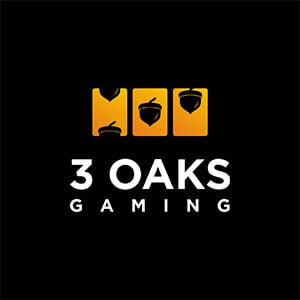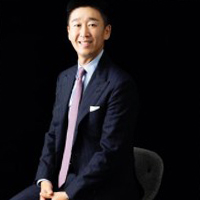At a time when places like the Las Vegas Strip are seeing gambling – as a revenue stream – taking a backseat to non-gaming activities such as dining, entertainment and retail, it is critically important to recognise the influence of millennial 'culture' on this behaviour shift. It is essential to understand why millennials in particular rebuff traditional casino games and layouts and how the industry can respond in ways that meet their needs and expectations.
Millennials are the 'social generation'. They are the early adopters of the social media revolution, which has forever disrupted communication and commerce as we know it. This generation is always connected, especially via their mobile devices, to their social circles. Gen Y values creativity, engagement and authenticity. This is a generation highly sceptical of corporations and traditional marketing tactics.
Millennials prefer to do business with companies that, like them, express a societal conscience and support companies they feel are aligned with their desire to make the world a better and more connected place. Whereas previous generations have been more interested in front-of-the-box product details, millennials want to know its back-of-the-box contents and backstory. They are willing to pay a premium to do business with companies they feel operate transparently and are in line with their values.
The size and immediacy of the impact consumers under age 35 will have on businesses of all types is enormous. Millennials are driving fundamental, permanent changes in branding, media and entertainment. Already encompassing more Americans than any other generation, Gen Y today represents more than $1.3 trillion in annual consumer spending, a number set to skyrocket over the next decade.
Tremendous revenue opportunities exist for the gaming industry to modernise offerings in ways that resonate with them. Understanding what makes millennials tick, with the important caveat of realising the inherent limitations of broad generalisations (particularly when applied to the most diverse generation ever) is the first step in configuring a new gaming experience, designed to appeal to younger consumers without alienating existing casino guests.
Understanding what makes Gen Y different – particularly regarding perceptions of self and value – will undoubtedly inspire offerings that leverage innovations in technology, communication and connectivity. For the gaming industry to become a viable option within the entertainment consideration set of millennials, fundamental changes to both content and physical environments must be prioritised.
Millennials' desire to influence an outcome within a highly social and interactive environment is in direct conflict with the traditional layout of casinosMillennials want to be part of defining the experiences they consume. They are not passive consumers, they are explicitly active participants. This desire to influence an outcome within a highly social and interactive environment is in direct conflict with the traditional layout of casinos, designed around gaming’s most significant historical money maker: slot machines.
Millennials are not ethically opposed to the concept of gambling, but they also are not enthusiastic about most current casino games and are turned off by the layout of the traditional gaming floor. Gen Y is not looking to 'get lost' within a gaming environment, their objective is to seek out a specific type of experience which has already been vetted and validated via social proof within their online network of friends, family and trustworthy strangers. Environments that are confusing, difficult to navigate and/or create barriers to transparency and convenience are typically avoided by this consumer group.
Millennials consume leisure activities in a 'lean forward' type of way. For Gen Y entertainment, retail and dining experiences are about more than just the unrelated components of those specific categories – it is about the overarching social environments – online and offline – of those things.
The main offering of today’s casinos, in the minds of millennials, is its physical space, which they view as not being very alluring. Gen Y wants open environments that buzz with a patchwork of passionate conversations, which may feel 'too loud' for an older consumer. But most of all, millennials actively seek out environments that foster social collisions.
Existing facilities may wish to experiment with zones, lounges and other quarantined areas that can be redesigned to better attract millennialsCasino gaming floors have traditionally been constructed to segment and steer. As regulatory and technological environments within the gaming industry continue to evolve to better include skill-based games and mobile applications, the physical restrictions of casinos must also be rethought. For new casino properties that have opportunities to capture younger consumers, it would be wise to consider design styles that are more open and communal. Existing facilities may wish to experiment with zones, lounges and other quarantined areas that can be redesigned to better attract millennials.
Thinking outside the box (of slots)
TopGolf is a modern, fun take on the driving range experience. Aimed squarely at millennials, TopGolf is part nightclub, part restaurant, part lounge hangout, part recreational center and part driving range. There is a lively, upbeat energy fuelled by colliding conversations, laughter, the clanking of golf clubs smacking golf balls and spirited music throughout an open environment that is very easy to navigate and see through.
The game itself has also been made more relevant to a younger crowd. Guests play in groups of typically four to six, somewhat like a bowling experience, and take turns hitting a modified microchip-infused ball toward lit-up targets in the outfield. The play experience is simultaneously satisfying to new and avid golfers alike. Because the ball is 'smart', players can keep track of their progress in an easy and fun way. While awaiting their turn, individuals relax at nearby tables and consume sharable plates.
Spaces between hitting bays are also open, encouraging social collisions between groups. Beyond the hitting bays at TopGolf, all areas have a community feel that encourages socialisation. Even the restaurant component at TopGolf is millennial-friendly, as guests can see into open kitchens giving a sense of transparency and honesty that so strongly resonates with Gen Y. Comparing the experience of TopGolf to a traditional driving range would be like comparing early black-and-white television to high-definition programming of today.
By recognising generational nuances and creating experiences that tap into the behaviours and desires of what millennials are looking for in a leisure experience, TopGolf has had tremendous success and continues to rapidly expand as a company into new markets. In 2016, TopGolf will open a 'Vegas-ised' version in partnership with MGM Resorts adjacent to MGM Grand.
Operators in major markets like Las Vegas recognise the macro trend of both increased visitation by younger consumers, compounded by the fact that millennials are spending lots of money when they come – on non-gaming offerings. For one of the major gaming companies in Las Vegas, millennials contributed $500m in spend and “almost none of it was on gaming”.
Because of this shift in visitation demographic and spending behaviour, regulators in New Jersey are now allowing games with skill-based elements in New Jersey. Perhaps Nevada is next.
If gaming regulations show some flexibility to allow for some (form of) skill-based elements to be wagered upon, there may be an opportunity to 'gamblifiy' live social experiences in the near future – especially those that have a presence in gaming jurisdictions like the Las Vegas Strip.
Undoubtedly, the casino games themselves – particularly slots – must change into something that better resembles a truly social and skill-based experience and, perhaps more importantly, takes place within the right type of physical space that spawns the type of energy and behaviour that attracts younger consumers.
A labour of like: making the Gen Y shortlist
For the gaming industry to become a viable option within the entertainment consideration set of millennials, fundamental changes to both content and physical environments must be prioritised.
Native American casinos may want to consider highlighting the unique historical and cultural stories of their tribe(s) in ways that allow consumers to participate, collaborate and share experiences via social media channels. This immersion in tribal culture could extend into food and beverage offerings on property. As self-described foodies, younger consumers in particular get excited about discovering different types of cuisine. This type of environment, with easy to navigate, open spaces that have a vibrant and authentic energy would likely appeal to millennials.
For integrated resorts, like The Mirage Hotel & Casino in Las Vegas, the issue is as much about attracting new customers as it is about the migration of existing millennial guests into a gambling proposition. As part of an effort to address this business opportunity, Mirage has placed several large interactive touch screen tables throughout the property. These InteractivePro tables, from Suzo-Happ’s SHIFT Interactive, are large tablets and allow for up to four users at a time to share and experience a myriad of connected gaming, entertainment and concierge-type offerings. Recognising the need to go where the millennials are (ie: not the casino floor), Mirage has smartly been experimenting with placing these tables in non-gaming areas such as a property coffee shop.
The transition from traditional casino floor layout to one that better fits what millennials are looking for should be under current consideration by every operator in the industry. Exactly how (and when) to pivot toward an offering that is more geared toward Gen Y will vary from property to property.
The Las Vegas Convention and Visitors Authority’s 2015 ad campaign, featuring popular American rock band Imagine Dragons, is squarely focused on millennials. The forthcoming iteration of their “What Happens Here, Stays Here” commercial is set at the SLS and MGM Grand and features a man and woman making eye contact in several venues before finally connecting at the Imagine Dragons concert.
Casinos of all types should study younger prospective consumers and contemplate how they can potentially get them to spend money on property via a layout that addresses what they are looking for in a gaming experience. Established properties may want to approach this shift in phases, whereby particular sections are redesigned to be more millennial-friendly. Because the marketplace shift toward Gen Y consumers becoming the dominant consumer group has already begun, it is very important for casino operators to make plans now to engage them.
Casino operators must also involve qualified market researchers at the front of any development or redesign effort. Because the characteristics, desires and expectations of younger consumers are so radically different than older generations, it would be incredibly risky to guess what they might want.
As this happens, the gaming industry will finally begin to develop an authentic and lasting relationship with Gen Y, its most elusive – and most important – customer of tomorrow, today.
Excerpt from whitepaper: 'Is Your Casino Optimized for Millennials?' For a copy, email [email protected].
With over 15 years of market research experience, Roberto Coppola brings a diverse skill set to the YWS team. By combining market-driven design and owner vision, YWS delivers world-class leisure properties and turn-key design solutions. They specialise in designing hospitality, gaming, retail, dining and entertainment environments. Founded in 2001, YWS is headquartered in Las Vegas and has a presence in Tulsa, our Native American services hub, Singapore and Macau.





































